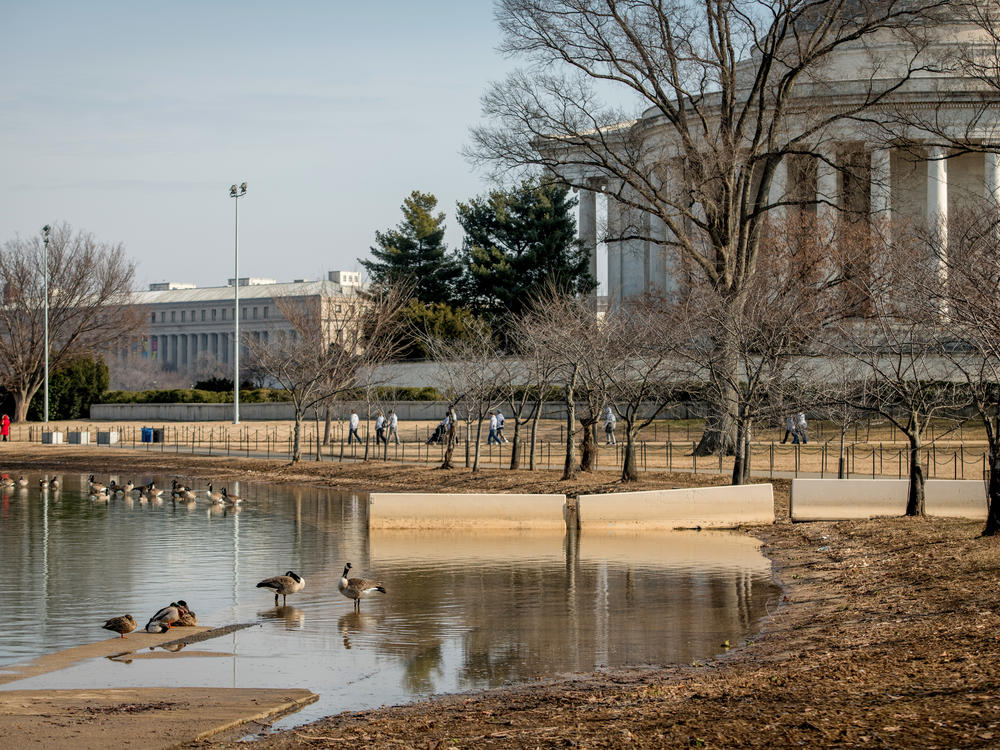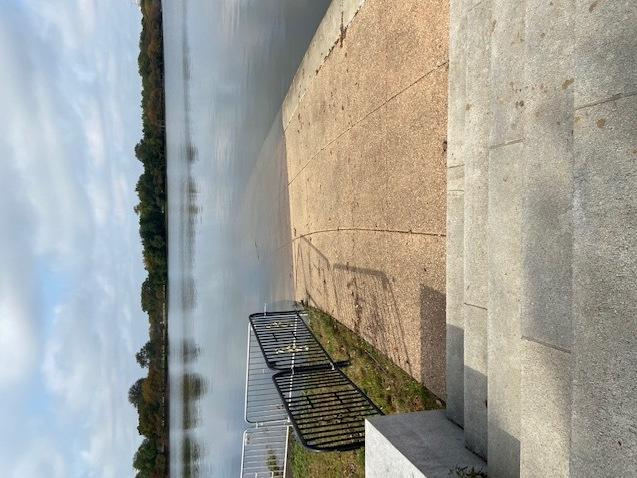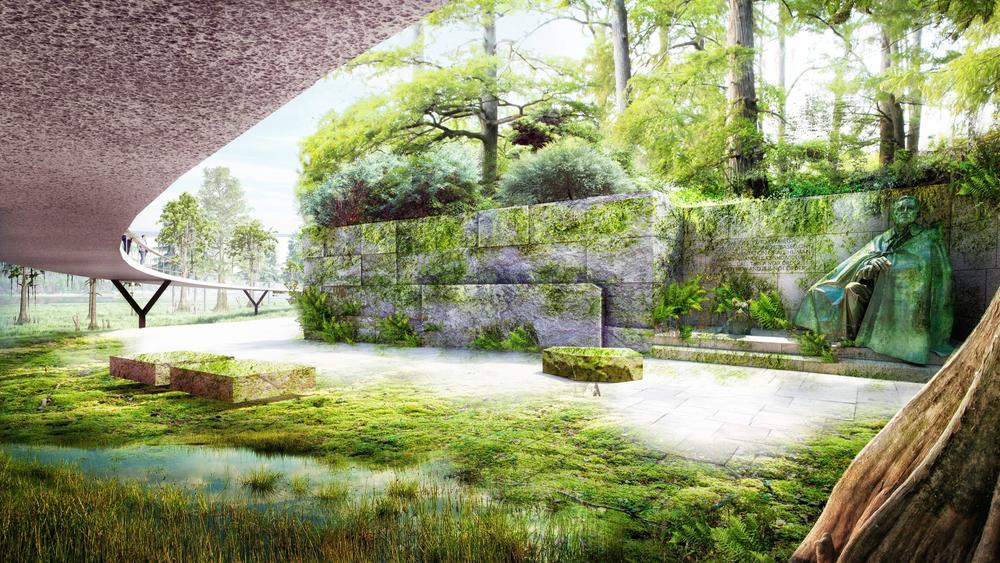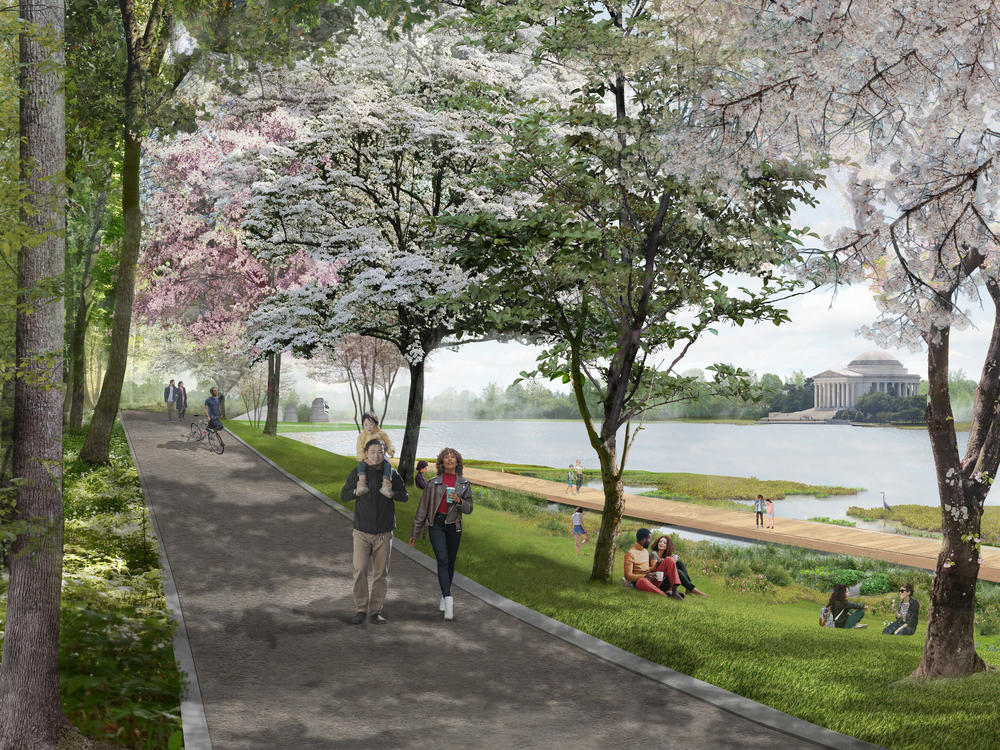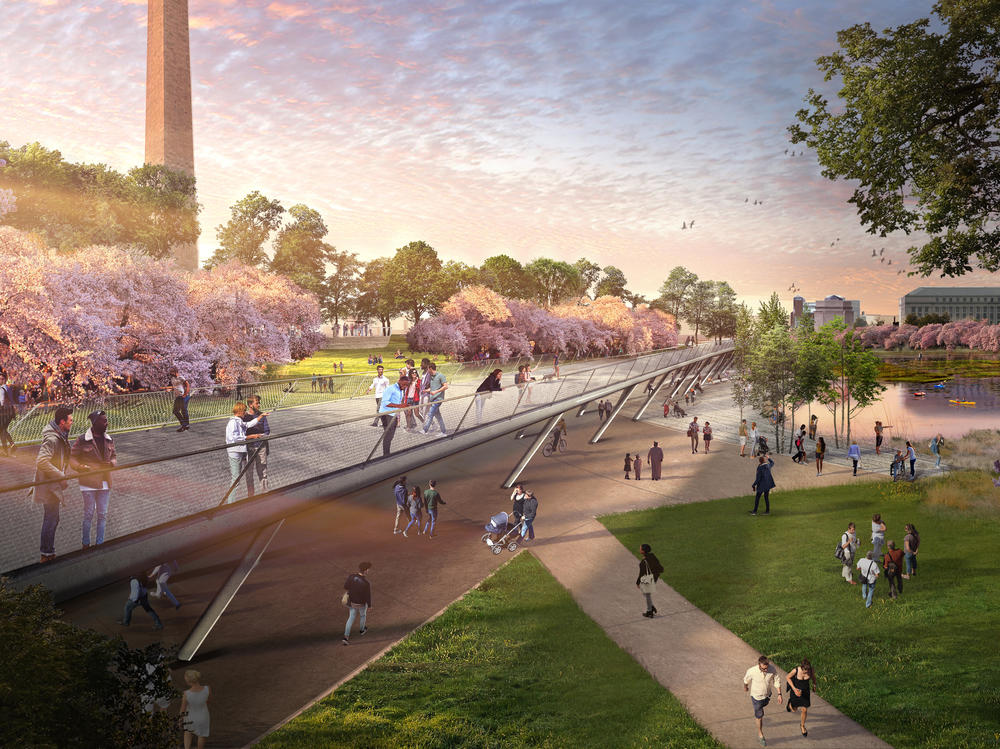Section Branding
Header Content
Landscape Architects Unveil Plans To Save The National Mall's Tidal Basin
Primary Content
Five landscape architects unveiled proposals Wednesday to save the sinking Tidal Basin on the National Mall in Washington, D.C. The plans run the gamut from a conservative approach to radical reimaginings.
The Tidal Basin connects centuries of American history and includes memorials to Thomas Jefferson, Franklin Delano Roosevelt and Martin Luther King Jr. Some 1.5 million people walk along the basin's rim during the annual Cherry Blossom Festival each spring. But with increased car and foot traffic, the ground underneath is dipping. As sea levels rise, the walkways flood daily.
"After 130-some years, we've got pathways that are too narrow," says Teresa Durkin, executive vice president at the Trust for the National Mall. As a result, visitors are forced onto the grassy areas. "The trees get trampled," says Durkin. "The trees get flooded with the brackish water from the flooding. So there's a myriad of issues and problems here."
Sensing the urgency, the National Trust for Historic Preservation, Trust for The National Mall and National Park Service joined forces last year to create the Tidal Basin Ideas Lab.
Five leading landscape architects — DLANDstudio, GGN, Hood Design Studio, James Corner Field Operations and Reed Hilderbrand — agreed to come up with proposals that would rescue the vast land and waterscape. The firms were paid modest fees through a $750,000 grant from American Express. American Express is also an NPR sponsor.
While their aesthetic philosophies differ, each proposal addresses the very real ecological challenges.
"Let the waters be free," writes Walter Hood in his proposal. "It could start with living in a wetland rather than draining it." Hood, whose Hood Design Studio is based in Oakland, Calif., also calls for "a prophetic aesthetic ... that is really telling the truth about a place." He envisions, for example, "replacing the classical design of the romantic and baroque with other stories embedded in the American landscape — and integrates storytelling around Hush Harbors, antebellum places where African American slaves went to practice their religion at Potomac Plantations."
Kathryn Gustafson of the Seattle-based firm GGN takes a measured approach. "Making small changes now will buy us time for the long process of getting projects built in D.C.," Gustafson says in her video presentation. "Then our design can adapt and evolve over time as we gain new knowledge." She also points out that the Tidal Basin hasn't "ever been looked at as an ecological whole." The GGN plan introduces new "flood plain forests" that would "slow flood waters while fitting into the national capital aesthetic." She continues, "We want the environment of the Potomac River to be part of this, allow a certain amount of flooding to come in to introduce the new ecology, but still preserving major cultural institutions."
In a proposal that might make historic preservationists tremble, James Corner introduces a scenario he calls "create entropy or create the inevitability of flooding, decline and decay." In other words, let nature take its course. Corner's New York-based Field Operations envisions an "elevated circular walk" where visitors can view monuments that would inevitably become ruins. "The monuments in this scenario will gracefully age and decay, melancholia prevails, sitting as entropic ruins, a natural time where daily flooding is absorbed as part of nature's cycle," Corner says in his presentation.
The Tidal Basin was built in the 1880s to solve flooding (ironically). According to the National Park Service, the reservoir was built "to harness the power of the tides in the Potomac River to flush silt and sediment from the Washington Channel."
Looking out over the Tidal Basin from the steps of the Jefferson Memorial, Durkin explains that to create the land on which we're standing, "Everything west of the Washington Monument was filled in. The Potomac River was actually filled in." If the Tidal Basin hadn't been built, "we would be standing in the Potomac River right now," Durkin says with a laugh.
It does make you wonder what early Washington architects were thinking. James Corner says that looking at historic maps of the capital, you can see that "the National Mall is actually on the old mouth of what was the Tiber Creek as it met the Potomac. And most of that land was marshland and mud. Very, very low lying land and, of course, subject to flooding."
The Tidal Basin Ideas Lab is not a design competition but rather, says Durkin, "a creative collaboration of the best minds that we could bring to the table." The goal is to foster conversation with architects, designers, urban planners, environmentalists and the general public.
Katherine Malone-France, chief preservation officer of the National Trust for Historic Preservation, says that during the pandemic, she and her colleagues have been struck by "how much people are interested in engaging with places digitally." She hopes people will ask tough questions. "Should we move the cherry blossoms? What would be the best way to circulate around the Tidal Basin?"
There isn't much time to waste. According to the Tidal Basin Ideas Lab, "the cherry trees in the grove gifted to the U.S. by Japan stand daily in 3 feet of water at high tide. By 2040, the Jefferson Memorial is projected to be submerged daily in 4 feet of water; by 2070, the MLK Jr. Memorial in 6 feet of water at high tide; and by 2100, they will likely stand in 9 feet of water under the same conditions."
"This isn't something that we're looking out for in 10 or 50 years' time," says Corner. "It's already with us. And so how we address it now is critical ... not simply as a Band-Aid but as something that can be truly transformative and become a legacy for future generations."
Copyright 2020 NPR. To see more, visit https://www.npr.org.
